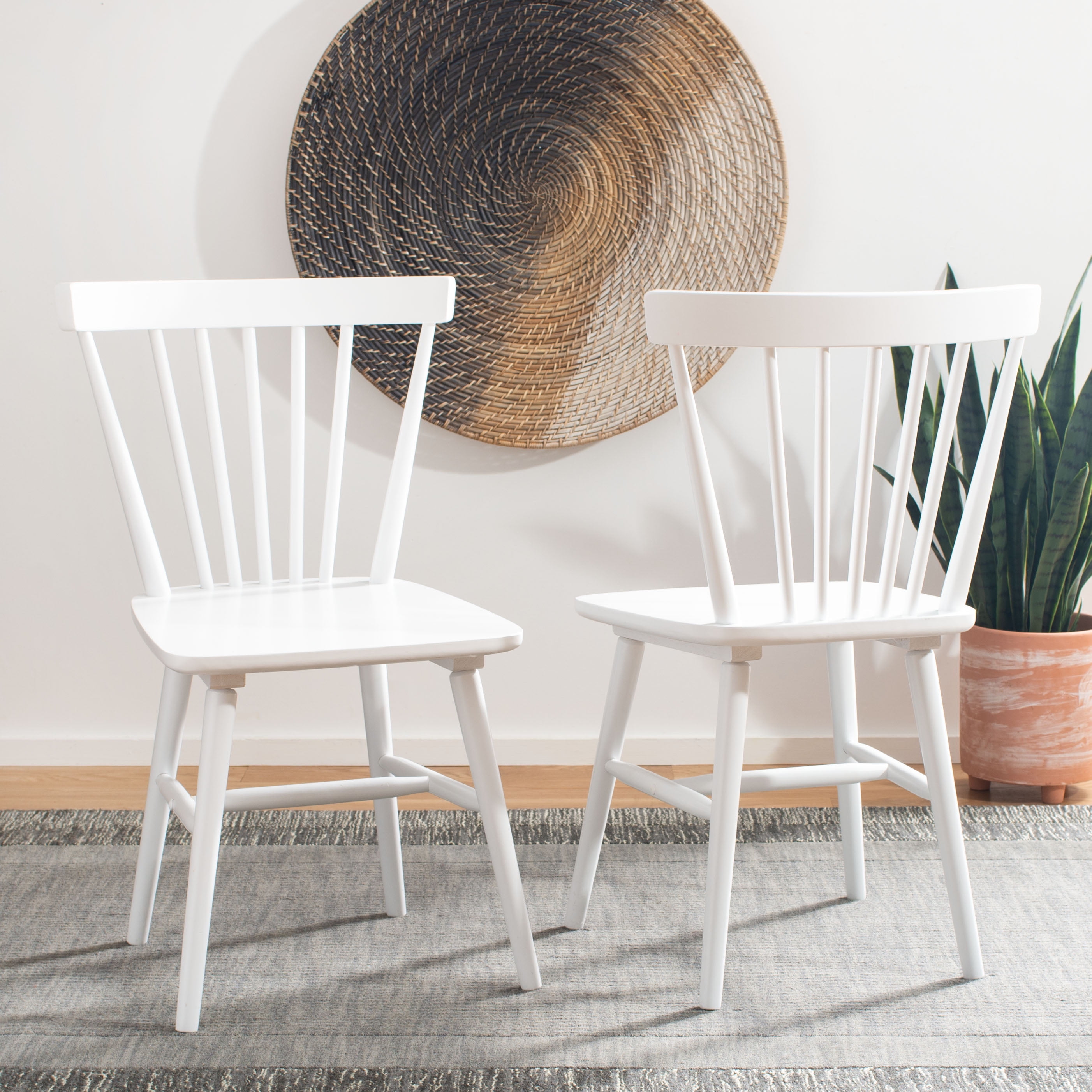Manufacturing & Materials of White Spindle Dining Chairs

The seemingly simple white spindle dining chair belies a complex manufacturing process, influenced heavily by the chosen materials. From the elegant curves of a wood chair to the sleek lines of a metal counterpart, the journey from raw material to finished product is a testament to human ingenuity and industrial processes. The choice of material directly impacts not only the aesthetic appeal but also the durability, cost, and environmental footprint of the chair.
White spindle dining chair – The manufacturing process varies significantly depending on the material selected for the chair’s construction. Wood, metal, and plastic each present unique challenges and opportunities in terms of design, production, and final finish.
Material Comparison
The following table compares and contrasts the manufacturing processes, durability, and cost of three common materials used in white spindle dining chair production.
| Material | Manufacturing Process | Durability | Cost |
|---|---|---|---|
| Wood (e.g., Beech, Oak) | Requires milling, shaping, joining (mortise and tenon, doweling), sanding, and finishing. Often involves multiple steps and skilled labor. | High durability with proper care and finishing. Susceptible to scratches, water damage, and insect infestation. | Medium to High. Cost varies greatly depending on wood type and quality. |
| Metal (e.g., Steel, Aluminum) | Involves cutting, bending, welding, and potentially powder coating or painting. Often uses automated processes for high volume production. | High durability, resistant to scratches and water damage, but can rust or dent. | Medium to High. Cost depends on the metal type and finishing processes. |
| Plastic (e.g., Polypropylene) | Manufactured using injection molding. A highly automated process capable of high-volume production. | Moderate durability. Susceptible to cracking and fading with prolonged sun exposure. | Low to Medium. Generally the most cost-effective option. |
Painting and Finishing White Spindle Chairs
Achieving a pristine white finish on a spindle chair requires a meticulous process. The choice of paint or finish significantly impacts the chair’s longevity and aesthetic qualities. Preparation is key: the surface must be smooth and clean before any application.
For wood chairs, a primer is often applied first to seal the wood and provide a better surface for the topcoat. This might be a wood sealer or a specialized primer for adhesion. Then, multiple coats of paint – either latex or oil-based – are applied, allowing each coat to dry completely before the next. Oil-based paints offer greater durability and water resistance, but require more time to dry and may emit stronger fumes during application. Latex paints are easier to clean up and dry faster, but may not be as durable in high-traffic areas. A clear topcoat, such as polyurethane, can add further protection against scratches and spills.
Metal chairs often receive a powder coating, a durable and even finish applied electrostatically. This process results in a chip-resistant and long-lasting finish. For plastic chairs, the color is often integrated during the injection molding process, eliminating the need for painting.
Sustainability Considerations, White spindle dining chair
The environmental impact of a white spindle dining chair hinges on the materials used and the manufacturing processes employed. Sustainable practices are increasingly important in furniture production.
Wood chairs sourced from sustainably managed forests minimize deforestation and support responsible forestry. The use of recycled or reclaimed wood further reduces the environmental footprint. Metal chairs made from recycled aluminum or steel reduce the demand for virgin materials and minimize mining’s impact. Plastic chairs, while often inexpensive, often rely on petroleum-based plastics, contributing to greenhouse gas emissions and plastic waste. Choosing chairs made from recycled plastics or bioplastics helps mitigate these concerns. Furthermore, the transportation distance of the materials and the chair itself contributes to the overall carbon footprint; opting for locally sourced materials and furniture reduces this impact.
